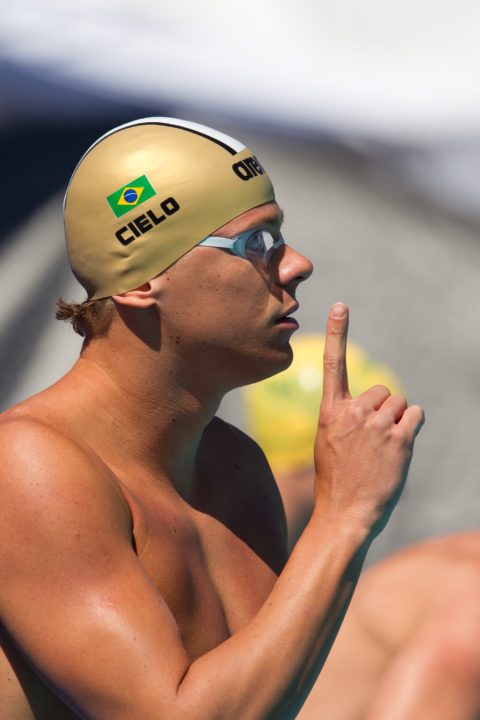For those who have been wondering as to how lane placements are decided when there are ties, the answer is fairly simple: by draw.
SW 3.1.2 Except for 50 metre events in 50 metre pools, assignment of lanes shall be (number 1 lane being on the right side of the pool (0 when using pools with 10 lanes) when facing the course from the starting end) by placing the fastest swimmer or team in the centre lane in pool with an odd number of lanes, or in lane 3 or 4 respectively in pools having 6 or 8 lanes. In pools using 10 lanes, the fastest swimmer shall be placed in lane 4. The swimmer having the next fastest time is to be placed on his left, then alternating the others to right and left in accordance with the submitted times. Swimmers with identical times shall be assigned their lane positions by draw within the aforesaid pattern.
In the men’s 50 free, where Brazil’s Cesar Cielo and American Cullen Jones tied for the top seed overall, Cielo won the draw to get lane 4, while Jones will be sitting next to him in lane 5 (despite how the rule above leads, Jones will actually be to his right not his left).
This is not particularly significant in a 50 free, where swimmers often aren’t breathing, but in the situation of say a tie for 6th, moving a swimmer from lane 7, and still in the thick of the competition, to an outside lane could be significant. In a crazy situation (rare, but not impossible) where there were a tie between 4 or more swimmers, then this could really loom as a large effect – moving a swimmer from lane 6 to lane 1 would be a big difference mentally.
There was also a tie for 8th, with Eamon Sullivan “winning” the draw over Roland Schoeman for lane 1.

You mean a tie for 6th, where you either get lanes 7 or 1. A tie for 7th gives you either lane 1 or 8.
no it doesnt…